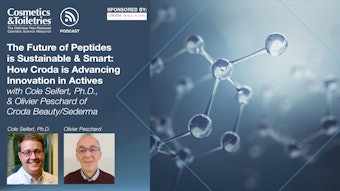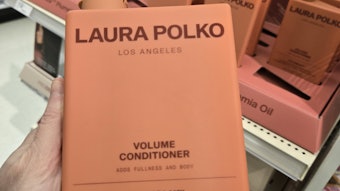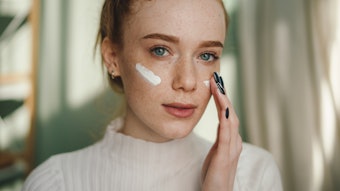
Demand for male skin care is rising, driven in part by its unique needs. This review compares male vs. female skin and looks to nanotechnology to enhance the delivery of actives, increase moisture and UV protection, and improve the stability of formulas.
This article is only available to registered users.
Log In to View the Full Article
Demand for male skin care is rising, driven in part by its unique needs. This review compares male vs. female skin and looks to nanotechnology to enhance the delivery of actives, increase moisture and UV protection, and improve the stability of formulas.
The term cosmetics comprises a diverse array of products, from everyday hygiene essentials like soap, shampoo, deodorant and toothpaste, to more specialized items such as sunscreen, hair dyes and skin care formulations, all designed to meet diverse consumer needs. European Regulation No. 1223/2009 defines a cosmetic as any substance or mixture intended for application on external parts of the human body or oral cavity, primarily to cleanse, perfume, alter the appearance of, protect, maintain the condition of, or correct body odors.1
Throughout history, the cosmetics industry has predominantly focused on women, emphasizing beauty enhancement, health maintenance and anti-aging while overlooking the unique needs of male skin. However, with the rise of online visibility, e.g., through social media and video conferencing, especially during and after the COVID-19 pandemic, more men have become more conscious of their appearance. Despite this growing awareness, though, many still avoid skin care due to its perceived feminization.2, 3
Male and female skin differ in key aspects such as thickness, collagen density, sebum production, muscle mass and susceptibility to environmental damage, yet most products are not designed with these differences in mind. Studies indicate that male skin is in a more chronically inflamed state, exacerbated by infrequent skin care use. This highlights the need for targeted products that address men’s specific dermatological concerns and grooming practices.2, 4
To enhance existing formulations for men’s care – as well as target products more effectively – nanotechnology is explored in the present review. In 1986, Lancôme and Dior introduced the first nanotechnology-based products,5 and it is now it is widely integrated into skin care, beauty products, hair care, sunscreens and deodorants.
Nanotechnology has gained interest thanks to its ability to enhance performance. Indeed, it enables the engineering of biomimetic particles capable of transporting substances to targeted cells, optimizing transcutaneous penetration through epidermal and dermal layers for improved efficacy.5 Its applications span the domains of cosmetics, dermatology and biological sciences, among others, holding promise for researchers, industries and consumers alike.6
These and other benefits of nanotechnology will be discussed throughout the present article. But to better illustrate the utility of these benefits, especially for men’s skin care, we first probe the biological similarities and differences of male and female skin.
Male vs. Female Skin
Male and female skin exhibit a fundamentally similar structure and function, with comparable biochemical pathways, cellular mechanisms and sensory responses.4 Certain structural differences make men less prone to showing signs of aging, such as thicker skin, high-density collagen and increased sebum production. This is primarily due to the effects of estrogen in women’s skin and androgens, such as testosterone, in male skin.2, 7
Figure 1, below, depicts the histological differences between male and female skin. Male skin typically exhibits a thicker epidermal layer with a higher presence of connective tissue and increased collagen bundles. Androgens promote collagen and elastin production in epidermal and dermal skin, making men’s skin approximately 25% thicker than female skin.2, 9, 10
On the other hand, higher skeletal muscle mass and lower subcutaneous fat in male skin contribute to more pronounced deep expression wrinkles in men as they age, in comparison with women.2, 10, 11 Also, androgens are responsible for higher sebum secretion in male skin, supported by more and larger sebaceous glands, especially linked to beard hair on the face.10, 11 In addition, male skin appears to be more susceptible to oxidative stress than female skin, which may be due to the antioxidant properties of estrogen.12 Additional physiological differences, such as skin tone, temperature and TEWL, are outlined in Table 1, below.
Impact of Shaving on Male Skin
In addition, the male face has 500 hair follicles per centimeter, each as richly innervated as the surrounding skin. And while facial hair protects against harmful UV rays,13, 14 shaving, which is a daily practice for many men, can induce mild abrasion of the outer skin layers. This elicits a cascade of physiological responses involving the stimulation of cutaneous nerve endings and subsequent activation of cell signalling pathways, ultimately leading to the release of cytokines.
Cytokines are implicated in the manifestation of typical shaving-induced irritation, characterized by sensations of burning and itching, and accompanied by increased skin erythema due to heightened blood flow.15 A compromised skin barrier integrity combined with the occurrence of ingrown hairs can also predispose individuals to developing the inflammatory disorder known as pseudofolliculitis barbae.10 The neck region is the most susceptible to this occurrence due to rougher skin topography and a lower hair emersion angle.4
Structural properties of the hair shaft also significantly affect shaving, as larger beard hair fibers require a cutting force nearly 3x higher than that needed to cut scalp or leg hair. And since male skin is often more deeply pigmented than female skin, the probability of post-inflammatory hyperpigmentation caused by trauma due to poor shaving techniques is higher.13
Nanotechnology in Formulation Development
The inherent properties of male skin and grooming habits present an opportunity for nanotechnology. Consider how, when performing pre-formulation studies, some molecules and extracts of interest, such as for sebum control or skin-soothing benefits, can face challenges related to poor solubility and penetration, hindering their absorption. Some of these compounds may also negatively impact the homogeneity or organoleptic properties of the final product due to strong colors or odors.5, 16 Nanotechnology offers a promising solution to these challenges.
Nanonization is the process of reducing substances to nano-sized particles to sufficiently penetrate the skin while maintaining their chemical properties in a way that does not compromise their efficacy. European Regulation No. 1223/2009 of the European Parliament and of the Council, Article 2, Section K, defines nanomaterials as insoluble or bio-persistent and intentionally manufactured materials with one or more external dimensions, or an internal structure, on a scale from 1 to 100 nm.1 While the process of nanonization poses challenges,5, 16 it can offer several advantages.
Nanodelivery systems or nanomaterials can facilitate direct interaction with the stratum corneum and skin appendages, which increases the contact area between the ingredients and corneocytes and, in turn, penetration. Nanotechnology also protects molecules from physicochemical and enzymatic degradation, enhancing their stability without compromising bioavailability and even controlling their release and the duration of their effect in the skin.16, 17
What’s more, the use of nanotechnology can improve organoleptic characteristics, texture, spreadability and adherence of the formulations to the skin; enable site-specific targeting; increase ingredient-loading capacity; and even empower the technology to act as an active agent itself.5, 18 The most popular nanomaterials used in cosmetics – such as liposomes, solid lipid nanoparticles (SLNs), nanoemulsions, dendrimers, etc. – and their possible advantages and disadvantages are reviewed in Table 2, below.
As stated, the biology of male skin and grooming habits such as shaving present distinct opportunities for more effective and targeted products. Following are several examples, presented with both traditional and nanotechnology-based solutions for male skin.
Mild Cleansing and Shaving
 Image by peopleimages.com at Adobe Stock
Image by peopleimages.com at Adobe Stock
Men's grooming routines are heavily influenced by the need to shave regularly. This practice, which involves a complex interaction between hair, skin and blade, can be significantly affected by the cosmetics and practices used before, during and after shaving. A poor shaving technique without the correct products can lead to facial skin issues like cuts, razor burns, irritation, discomfort and even the development of skin conditions, as previously described.4, 13, 15
Before shaving, consumers should prepare their skin and hair to reduce friction, optimize the closeness of the shave, and minimize skin trauma. To achieve this, the skin should be cleaned thoroughly yet mildly to eliminate any residual substances on the skin surface and around the follicular ostia – such as debris, sebum and desquamating corneocytes – that may impede the shaving process. This also allows for the hydration of facial hair, reducing the hair-cutting force, facilitating the shave and improving comfort.4, 13
The use of cleansers is important even during times when shaving is infrequent. Given the increased activity of the sebaceous glands in male skin, it is important to remove sebum to help maintain the balance of the skin microbiome. The uncontrolled growth of bacteria such as Propionibacterium acnes and fungal organisms like Malassezia, promoted by accumulated sebum, can lead to the development of skin conditions such as acne and seborrheic dermatitis.15
Micellar systems, nanoemulsions and metallic antimicrobial nanoparticles: Cleansers can be formulated variably to cater to distinct consumer preferences and requirements.19 Micellar systems and nanoemulsions are prominent in cleansers. Micellar water contains water and mild surfactants in low concentrations to successfully remove dirt from the skin without foaming or compromising the skin barrier.5
Antimicrobial properties are another key consideration, given that elevated sebum and sweat production in male skin leads to the growth of bacteria and fungi, which can contribute to body odor and potential skin conditions. The integration of metal-based nanoparticles (NPs), such silver, holds promise in cleansers such as soap bars and liquid detergents, facilitating the eradication of harmful microbes.
What’s more, silver's anti-inflammatory properties have been reported to help reduce acne and sun damage – conditions frequently encountered in male skin.5, 11, 19, 20 A randomized trial comparing the efficacy of silver nanoparticles with clindamycin in treating acne vulgaris concluded that a silver NP (Ag NP)-based gel showed comparable effectiveness, good tolerability and a better satisfaction score.21
Moisturizers and Anti-aging
Younger men tend to have oily skin that can lead to the formation of comedones and acne. At around the age of 40, however, men may experience reduced hydration levels. The highest rate of TEWL generally occurs between the ages of 50-59, which may be linked to lower levels of testosterone.2, 22
In post-shaving skin care, it is therefore crucial to rehydrate the skin, alleviate sensory discomfort and facilitate the restoration of the skin barrier.4, 13 Moisturizers specifically formulated for post-shave applications should feature lower viscosity for effortless spreadability and be enriched with active ingredients that promote epidermal renewal, even skin tone and soothe irritation.11
Anti-aging actives: Male consumers can benefit from ingredients such as hydroxy acids, retinoids, antioxidants and depigmenting ingredients, among others. Hydroxy acids have an exfoliation action that helps to diminish fine lines, hyperpigmentation and acne. Depending on the skin type, various hydroxy acids may be chosen – e.g., gentler hydroxy acids such as glycolic acid for dry skin types, and fat-soluble ones such as salicylic acid for oily skin types. Retinoids minimize the appearance of wrinkles and fine lines by increasing collagen formation, reducing acne and improving texture and tone by stimulating cell turnover.
Antioxidants such as vitamin C can help to prevent damage caused by free radicals that can lead to premature aging. Depigmenting ingredients may be used to reduce melanin formation in situations where hyperpigmentation has occurred. As mentioned before, these situations have a higher chance of occurring post-trauma either due to poor shaving techniques or due to lesions induced by inflammatory acne.2, 13, 23
Nanoparticles, nanoemulsions, SLNs and NLCs: Nanoparticles, nanoemulsions and SLNs can offer advantages over conventional skin care products. Nanoemulsions are widely used in cosmetic formulations and as noted, facilitate the delivery of active ingredients while addressing issues such as storage, solubility, stability and loss of activity.
Nanoemulsions synthesized using the phase inversion emulsification method, containing ingredients such as rice bran oil, sorbitan oleate and castor oil, can create moisturizers with high stability and low irritability. These nanoemulsions exhibit excellent antioxidant properties, due to the tocopherols and gamma-oryzanol in the formulations, and hydration properties, exemplifying their potential for male skin care.18
Lipid and surfactant-based nanoparticles, including SLNs and nanostructured lipid carriers (NLCs), are also extensively employed for transdermal delivery and the regulation of skin’s water content. The nanoscale dimensions and structural integrity of SLNs and NLCs help them adhere to the skin, forming a transparent occlusive layer. This layer can act as a barrier, effectively reducing water loss, strengthening the skin's protective barrier and shielding it from environmental pollutants.
SLNs loaded with antioxidants like resveratrol, vitamin E and epigallocatechin gallate exhibit good skin protection properties. Resveratrol-loaded SLNs have also demonstrated controlled release profiles, achieving up to a 70% release within 24 hr, thereby enhancing bioavailability. Furthermore, resveratrol-encapsulated SLNs have shown efficient penetration into the stratum corneum, making them promising alternatives for skin care products thanks to their lasting antioxidant properties.5
Metallic nanoparticles and nanoparticle-loaded liposomes: Metal-based nanoparticles, similarly known for their antioxidant properties, can also contribute to anti-aging effects by neutralizing free radicals. Gold nanoparticles (Au NPs) exhibit antioxidant properties that specifically target the creation of reactive oxygen species (ROS) induced by UV radiation.
Au NPs can also compete with carbohydrates in binding to extracellular matrix proteins, thereby inhibiting the formation of advanced glycation end-products (AGEs). The accumulation of AGEs is known to diminish skin elasticity over time.5
Cerium oxide nanoparticle-loaded liposomes can also minimize adverse effects caused by free radicals.18 This holds particular importance for male skin, given its lower response to oxidative stress.4
Formulations that incorporate liposomes composed of unsaturated phospholipids offer an alternative to traditional emulsions and can provide skin protection. Liposomes generally disintegrate upon application to the skin, where their constituents penetrate deeply into the stratum corneum to deliver given benefits. Phospholipases in the skin catalyze the production of osmolytes like betaine that aid in preventing water loss by maintaining keratinocyte volume and enhancing tight junction expression.5
Lip balms: Nanoparticles can also be integrated into formulations such as lip balms to retain moisture within the lips, thereby preserving hydration and diminishing the occurrence of cheilitis – i.e., the inflammation of lips characterized by the cracking, fissuring and peeling of skin.18
Sunscreens
One of the most essential skin care products regardless of gender is sunscreen, as it not only provides health-related benefits such as minimizing the risk of skin cancer, but also serves to prevent premature aging caused by sun exposure. UV radiation is one of the most significant factors in extrinsic skin aging that translates into skin wrinkling, roughness and sagging.14, 24, 25
The need to increase awareness for sunscreens among male consumers in particular is of the utmost importance. Data from The Center for Disease Control and Prevention indicates that men are 40% more likely to develop skin cancer than women because in general, they are more exposed to UV rays – without the necessary protection.2, 26 These incidences are attributed mainly to chronic UV exposure rather than acute exposure. Notably, they occur even with men’s protective facial hair and darker overall skin pigmentation, compared with females.
Indeed, female and male skin show different skin sensitivity responses to UV-induced erythema. Male skin shows a 16% lower minimal erythemal dose threshold than female skin. As stated, this can be attributed to hormonal differences.4
Nano and non-nano UV filters: Photoprotection against UVA and UVB radiation can be accomplished using UV filters.14 These cosmetics can be formulated using metal oxide inorganic nanoparticles like zinc oxide and titanium dioxide, which absorb UV irradiation and scatter UV light, thus preventing its harmful effects on the skin.
Titanium dioxide particles are more efficient as UVB filters, while zinc oxide particles are more efficient as UVA filters. Their nanoparticle forms are widely utilized in sunscreens due to their efficiency, inherent biocompatibility upon interaction with dermal tissues and enhanced capability of absorbing light due to their reduced size. They are also photostable, safe and more environmentally friendly than organic filters.
Nanocrystals: Nanocrystals have been proposed to significantly increase the loading capacity of these filters in water phases, given that many organic filters are oil-soluble or oil-miscible and dispersed in the hydrophobic phase of sunscreen formulations. Nanocrystals comprised of tris-biphenyl triazine and methylene bis-benzotriazole biphenyl triazine are used in Europe as broad-spectrum UV filters.
Botanical nanoparticles: The use of organic green materials holds high appeal in the cosmetics industry. One example is naturally occurring ivy nanoparticles, derived from the adventitious roots of Hedera helix (English ivy), that have emerged as an alternative to traditional inorganic UV filters.
These protein-based nanocomplexes exhibit advantageous traits such as biodegradability, transparency, efficiency against UVA, and resilience across a broad spectrum of temperatures and pH levels. However, there are currently no commercial sunscreens incorporating these NPs. Consequently, further validation of their efficacy and safety would be necessary before widespread use.5
Antimicrobial Products
In cosmetics, antimicrobial agents are often incorporated as actives to prevent and aid the treatment of bacterial and fungal skin infections and address the imbalance of skin microbiota. They can additionally serve as preservatives to safeguard against microbial contamination of the product throughout both the manufacturing process and customer use.5
Deodorants employ antimicrobial agents as well to reduce body odor and bacterial growth, ultimately providing a fresh and clean scent.11, 27 Deodorants are staple skin care products among men, especially considering the heightened activity of their eccrine and apocrine sweat glands.
Ag NPs: Silver nanoparticles (Ag NPs) are possibly the most widely employed nanomaterials for antimicrobial functions. These nanoparticles often exhibit performance equal or superior to traditional antimicrobial agents. They demonstrate the ability to disrupt biofilm formation, which further decreases the probability of infection recurrence.5
Au NPs: Au NPs also possess antimicrobial properties and are frequently suggested as alternatives to Ag NPs. Au NPs are inert, biocompatible and have a superior safety profile compared to Ag NPs. Studies suggest that Au NPs exhibit greater colloidal stability than Ag NPs when incorporated into semisolid formulations. However, despite these promising attributes, Ag NPs remain the preferred choice presently.5
Color Cosmetics
Inorganic nanoparticles such as gold and silver can also play a role in influencing skin tone. Gold nanoparticles are responsible for red or blue tones, while silver nanoparticles are used for yellowish ones. Combinations can therefore produce various color effects.
While men typically are not the main consumers of color cosmetics, the increased use of social media and video conferencing has led to the more frequent use of products like concealers and foundations to achieve an even skin tone and hide imperfections.18
Health and Environmental Considerations of Nanotech
Although nanotechnology provides technical and economic advantages for cosmetic formulations, concerns have been raised over their potential human health and environmental impacts.6 These must be taken into consideration during product development and testing.
Persistence and penetration: For example, due to their nanoscale dimensions, large surface areas and typically positively charged surfaces, some nanomaterials can exhibit bio-persistent properties within the upper layers of the stratum corneum. And although most nanoparticles are designed to remain on the skin’s surface, under specific conditions such as prolonged exposure, formulation-specific properties or compromised skin integrity, they may penetrate deeper, raising toxicity concerns.5
Indeed, the same physicochemical properties of nanomaterials that allows them to traverse biological membranes and that enhances their bioavailability simultaneously presents risks related to cellular interference. Care must be taken to ensure these materials interact desirably with intracellular components so as not to disrupt normal cellular processes, induce oxidative stress, trigger inflammatory responses or, in severe cases, lead to apoptosis or necrosis.
It is also important to note that substances that are typically considered non-hazardous at the macroscale may exhibit altered physicochemical properties when reduced to the nanoscale, leading to heightened chemical reactivity and enhanced biological activity.28
ROS generation: One of the primary toxicological concerns associated with nanoparticles is their ability to generate excessive ROS, a mechanism central to many adverse biological responses. Potentially elevated ROS levels must therefore be considered to avoid compromising cellular homeostasis leading to oxidative stress, inflammation and widespread molecular damage. Such oxidative imbalanced can deteriorate cellular membranes, denature proteins and induce DNA mutations linked to carcinogenesis and genotoxic effects.28
Additionally, interactions between nano delivery systems and biological targets remain only partially understood, further complicating safety assessments and reinforcing the need for continued research.16
Human exposure routes: Nanoparticles can enter the body through three primary routes: inhalation, ingestion and dermal absorption, with the latter being the most relevant in cosmetic applications. Thus, special consideration is needed for cosmetics formulated as sprays, powders or aerosols, as the inhalation of nanoparticles could pose additional health risks.18
On the other hand, nanomaterials exhibit dose-dependent toxicity across various routes of administration. It is well-established that the bioavailability of an active ingredient is primarily influenced by its dosage rather than its intrinsic physicochemical properties. In cosmetic formulations, one major concern is that nanoformulations may enhance the systemic absorption of active ingredients, potentially increasing their concentration in the bloodstream and exacerbating toxic effects.28
Experimental studies further reinforce these concerns. Research by Ryman-Rasmussen, et al.,29 demonstrated that specific nanomaterials could penetrate deeper layers of pig skin within just 24 hr of exposure.28 Additionally, scientific evidence has shown that exposure to silver nanoparticles can significantly decrease cell viability and metabolic activity while also impairing cell migration and proliferation. Prolonged exposure has been associated with caspase 3/7 activation and DNA damage, resulting in both genotoxic and cytotoxic effects.18
Environmental challenges: Beyond human health, nanotechnology presents potential environmental challenges. While it has been recognized for its role in reducing waste, mitigating greenhouse gas emissions and limiting hazardous chemical discharge, nanotechnology’s environmental impact remains insufficiently understood.
Due to the unique physical and chemical properties of nanoparticles, they could disrupt biochemical processes in ecosystems – and during manufacturing and product use, nanomaterials may be released into water, air and soil. Once in the environment, their behavior would be influenced by factors such as their mobility, dispersion mechanisms, solution chemistry, redox potential and overall stability under different conditions. Additionally, exposure levels throughout the product’s lifecycle including transportation, use and disposal, would further determine their ecological footprint.28
All these uncertainties must be considered during product development – and further research will be essential to fully assess the long-term environmental consequences of nanoparticles.
Conclusions
Despite the growing men’s personal care market, there remains a lack of products designed to accommodate the distinct characteristics of male skin – from its lower antioxidant capacity, to higher sebum production and shave-induced irritation. In response, products such as sunscreens, moisturizers, mild cleansers and anti-aging formulas can be developed but key ingredients in these formulas, such as antioxidants and proteins, are often challenged by poor skin absorption, instability and more. Nanotechnology offers a solution.
By enhancing dermal penetration and the controlled release of actives, nanomaterials can improve the stability, moisturizing capabilities and UV protection of cosmetic formulations.
As the cosmetics industry continues to evolve, the integration of nanotechnology alongside advancements in omics sciences, big data analysis and machine learning will shape the future of personalized skin care. These technologies enable a deeper understanding of biological responses to cosmetic formulations, driving the development of more effective, science-backed products.
However, while the advantages of nanotechnology are promising, it is important to address potential safety concerns. The long-term effects of nanoparticle exposure and their interactions with biological cells are not yet fully understood, highlighting the need for further research and regulatory consensus on toxicity and safety assessments. Continued scientific investigation will be essential to ensure the responsible and effective application of nanotechnology in cosmetic formulations.
Acknowledgements: The authors gratefully acknowledge Fundação para a Ciência e a Tecnologia (FCT) through projects UIDB/04138/2020, UIDP/04138/2020.
References
1. Europa.eu. (2009, Nov 30). Regulation (EC) No. 1223/2009 of the European Parliament and of the Council. Journal of the European Union. Available at https://health.ec.europa.eu/system/files/2016-11/cosmetic_1223_2009_regulation_en_0.pdf
2. Elfving-Hwang, J.K. (2021, Jun 9). Man made beautiful: The social role of grooming and body work in performing middle-aged corporate masculinity in South Korea. Men Masc, 24(2) 207-27.
3. Elsner, P. (2012). Overview and trends in male grooming. Brit J of Dermatol, 166 2-5.
4. Oblong, J.E. (2012, May). Male skin care: Shaving and moisturization needs. Dermatol Ther, 25(3) 238-43.
5. Salvioni, L., Morelli, L., … Palugan, L., et al. (2021, Jul). The emerging role of nanotechnology in skin care. Adv Colloid Interface Sci, 293 102437.
6. Ferreira, L., Pires, P.C., ... Mazzola, P.G., et al. (2023, Mar 24). Nanomaterials in cosmetics: An outlook for European regulatory requirements and a step forward in sustainability. Cosmetics, 10(2) 53.
7. Sikora, B.C., Wortzman, M., Nelson, D.B. and Dover, J.S. (2021, Sep 3). A pilot study evaluating the efficacy and tolerability of a comprehensive, hydrating topical antioxidant developed specifically for men. J Cosmet Dermatol. 20(9) 2816-23.
9. Tur, E. (1997, Jan). Physiology of the skin — Differences between women and men. Clin Dermatol, 15(1) 5-16.
10. Baker, A. (2022). Male aesthetic treatments: A review. The PMFA Journal, 9(4).
11. Giacomoni, P.U., Mammone, T. and Teri, M. (2009, Sep). Gender-linked differences in human skin. J Dermatol Sci, 55(3) 144-9.
12. Ohio State University Medical Center. (2011, Dec1). Lower antioxidant level might explain higher skin-cancer rate in males. ScienceDaily. Available at www.sciencedaily.com/releases/2011/12/111201174231.htm
13. Draelos, Z.D. (2012, Mar). Male skin and ingredients relevant to male skin care. Brit J Dermatol, 166 13-6.
14. Krutmann, J., Schalka, S., Watson, R.E.B., Wei, L. and Morita, A. (2021, Nov 6). Daily photoprotection to prevent photoaging. Photodermatol Photoimmunol Photomed, 37(6) 482-9.
15. Rietzler, M., Maurer, M., … Burghardt, R., et al. (2016, Jun 22). Innovative approaches to avoid electric shaving‐induced skin irritation. Int J Cosmet Sci, 38(S1) 10-6.
16. Veiga, E., Ferreira, L., ... Arts, A., et al. (2023 Nov). Anti-aging peptides for advanced skin care: Focus on nanodelivery systems. J Drug Deliv Sci Technol, 89 105087.
17. Almeida, C., Filipe, P., Rosado, C. and Pereira-Leite, C. (2022, Jan 15). Nanodelivery strategies for skin diseases with barrier impairment: Focusing on ceramides and glucocorticoids. Nanomaterials, 12(2) 275.
18. Yadwade, R., Gharpure, S. and Ankamwar, B. (2021, Jun 1). Nanotechnology in cosmetics pros and cons. Nano Express, 2(2) 022003.
19. Abbas, S., Goldberg, J.W. and Massaro, M. (2004, Jan). Personal cleanser technology and clinical performance. Dermatol Ther, 17(s1) 35-42.
20. Jacobi, U., Gautier, J., Sterry, W. and Lademann, J. (2005). Gender-related differences in the physiology of the stratum corneum. Dermatology, 211(4) 312-7.
21. Jurairattanaporn, N., Chalermchai, T., Ophaswongse, S. and Udompataikul, M. (2017, Jan). Comparative trial of silver nanoparticle gel and 1% clindamycin gel when use in combination with 2.5% benzoyl peroxide in patients with moderate acne vulgaris. J Med Assoc Thai, 100(1) 78-85.
22. Baker, A. (2022). Male aesthetic treatments: a review. The PMFA Journal.
23. Tang, S.C. and Yang, J.H. (2018, Apr 10). Dual effects of alpha-hydroxy acids on the skin. Molecules, 23(4) 863.
24. Matts, P.J. and Fink, B. (2010, Apr 1). Chronic sun damage and the perception of age, health and attractiveness. Photochemical and Photobiological Sciences, 9(4) 421-31.
25. Weber, S.M. and Ford, K. (2009, Aug). Male skin care needs. Facial Plast Surg Clin North Am, 16(3) 337-44.
26. Roberts, C., Goldstein, E., Goldstein, B., Jarman, K., Paci, K. and Goldstein, A. (2021, Jan 1). Men’s attitudes and behaviors about skin care and sunscreen use. Journal of Drugs in Dermatology, 20(1) 88-93.
27.Martini, M.C. (2020, May). Déodorants et antitranspirants. Ann Dermatol Venereol, 147(5) 387-95.
28. Gupta, V., Mohapatra, S., … Ansari, M., et al. (2022, Mar 10). Nanotechnology in cosmetics and cosmeceuticals — A review of latest advancements. Gels, 8(3) 173.
29. Ryman-Rasmussen, J.P., Riviere, J.E. and Monteiro-Riviere, N.A. (2006, May 1). Penetration of intact skin by quantum dots with diverse physicochemical properties. Toxicological Sciences, 91(1) 159-65.










